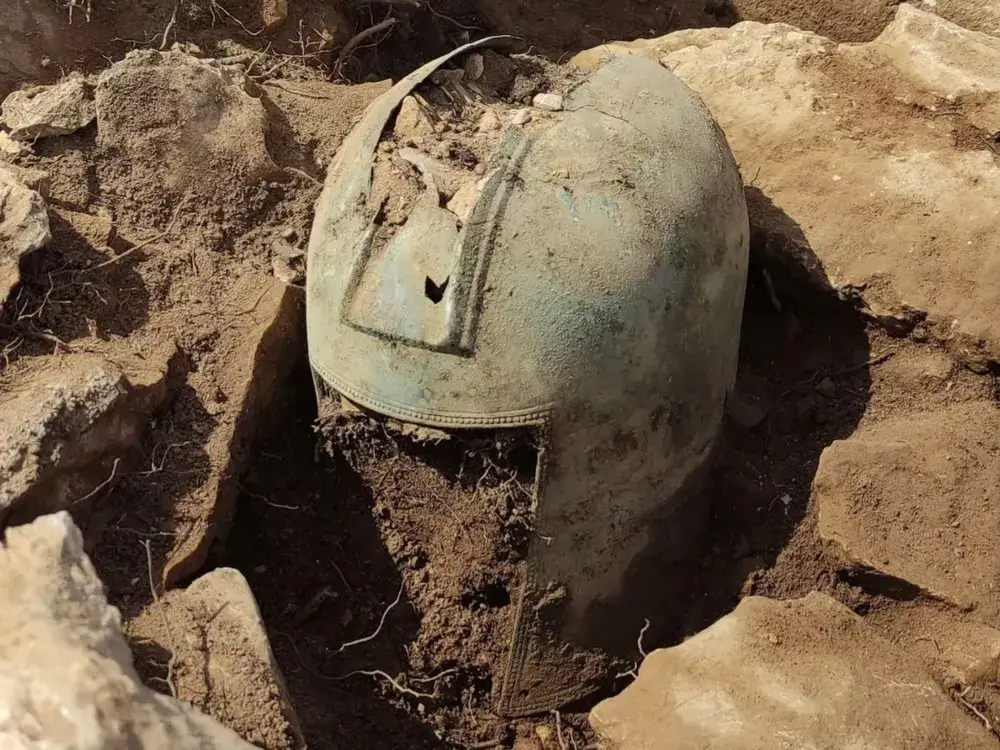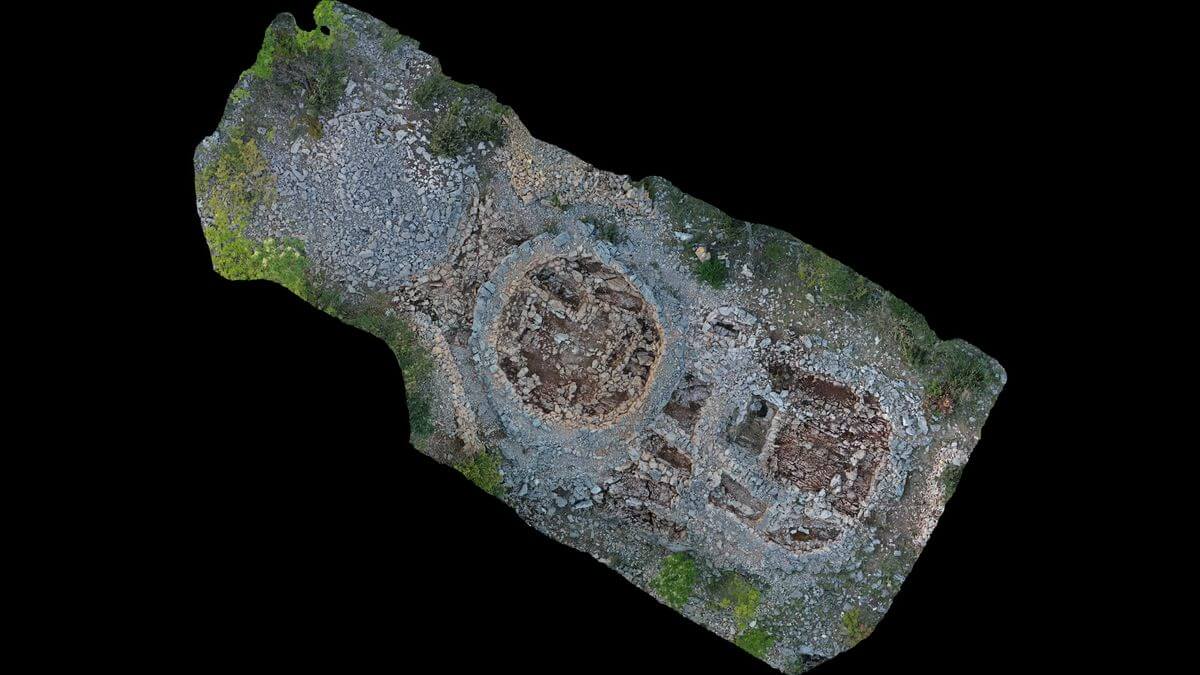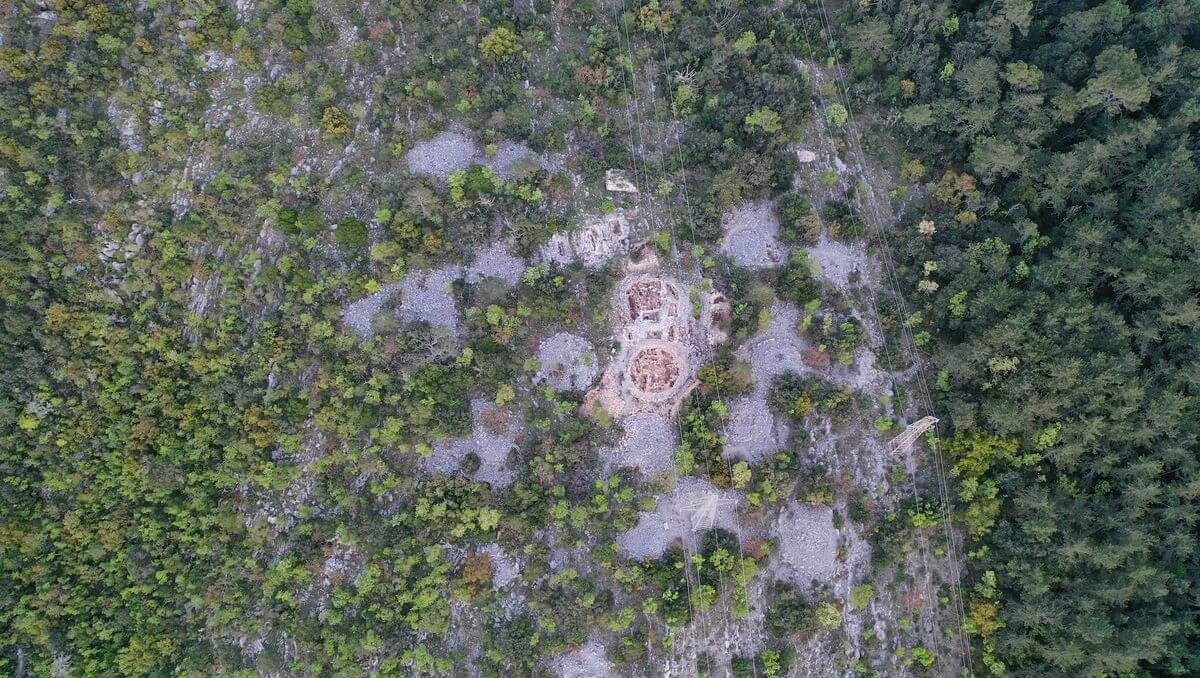
Why Did The Ancient Illyrians Place Helmets In Their Burial Mounds?
Archaeologists excavating a burial mound in Croatia have discovered a 2,500-year-old Illyrian helmet that may have been a votive offering.
By: Owen Jarus | Live Science
Archaeologists in Croatia have discovered a 2,500-year-old metal helmet within an Illyrian burial mound that may have been a votive offering or part of a cult practice.
The helmet was unearthed in a stone structure within a burial mound at the Gomile archaeological site. It dates to sometime between the end of the sixth century B.C. and the beginning of the fourth century B.C., Hrvoje Potrebica, an archaeology professor at the University of Zagreb who is leading the excavation, told Live Science in an email.
The site of Gomile has multiple burial mounds and is located near the village of Zakotorac, on the Pelješac Peninsula near the Adriatic Sea. “Each mound [contains] multiple graves and each grave contain[s] multiple burials,” Potrebica said.
According to ancient Greek records, a people the Greeks called the Illyrians flourished in the region around the time the helmet was made. The Illyrians were divided among different tribes and kingdoms and were gradually conquered by the Romans in a series of wars that occurred between 229 and 168 B.C.

While the newly found helmet has yet to undergo conservation, it “seems to be in perfect condition” Potrebica said.
The stone structure holding the helmet is separate from all the graves in the burial mound, which suggests it was intended as a votive offering “to deceased ancestors or part of some cult practice related to the whole mound and not [a] particular individual or a grave,” Potrebica said.
Ancient Aliens & The Mysterious Disappearance of The Mayan Civilization
If the newly found helmet was used in battle, it may have had a psychological effect on the enemy, Domagoj Perkić, director of the Archaeological Museum, which is a part of Dubrovnik Museums, and a researcher working on the excavation, told Live Science in an email. “Just try to imagine a warrior with a shiny [helmet] on his head, in the sun, on the eve of a battle … that moment alone causes awe in the enemy.”

In 2020, archaeologists found another helmet in a stone structure in a nearby burial mound, Potrebica said. Like the newly found helmet, it likely wasn’t meant for any one person or grave.
The Centre for Prehistoric Research in Zagreb, which Potrebica is president of, is coordinating research at the Gomile site and collaborating with scientists from Dubrovnik Museums and the Institute of Archaeology in Croatia.
* * *
NEXT UP!
This Ancient Maya City Was Hidden In The Jungle For More Than 1,000 Years
Researchers from Mexico’s National Institute of Anthropology and History (INAH) have discovered the remains of a centuries-old Maya city in the Balamkú ecological reserve on the Yucatán Peninsula.
In a statement, lead archaeologist Ivan Šprajc says the settlement probably served as an important regional centre during the Maya Classic period, which spanned 250 to 1000 C.E. The team named the newly discovered ruins Ocomtún—“stone column” in Yucatec Mayan—in honour of the many columns found at the site.
“The biggest surprise turned out to be the site located on a ‘peninsula’ of high ground, surrounded by extensive wetlands,” says Šprajc in the statement, per Google Translate. “Its monumental nucleus covers more than [123 acres] and has various large buildings, including several pyramidal structures [nearly 50 feet] high.”
* * *
READ MORE: This Could Be The Earliest Evidence of A 260-Day Maya Calendar Ever Found
Read more on The Maya Civilization: Were The Mayans Visited by Ancient Astronauts?
Telegram: Stay connected and get the latest updates by following us on Telegram!
We’d love to hear from you! If you have a comment about this article or if you have a tip for a future Collective Spark Story please let us know below in the comment section.
